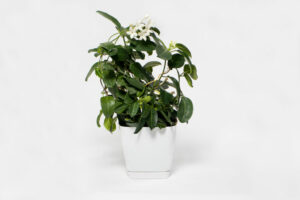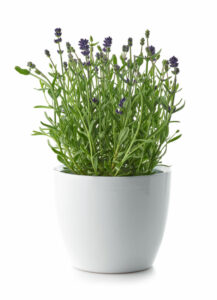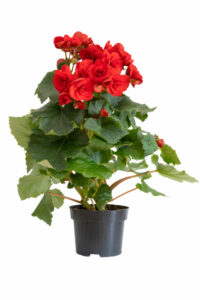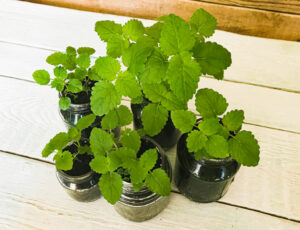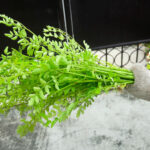HousePlantJoy is supported by our audience. When you purchase through one of our links, we may earn a small affiliate commission. As an Amazon Associate I earn from qualifying purchases. Your cost is not affected.
==================
Add Houseplants That Smell Good
There is always something interesting about houseplants that smell good. It’s why the cultivation of sweet-smelling blossoms turns popular from time to time. Each bloom delivers unique yet pleasing and even uplifting scents. Plus, more often than not, these fragrant houseplants also come with gorgeous features. If you want to add some nature to your home, fill your rooms with these aromatic flowering plants. So taking care and being creative with them at home is quite beneficial in many ways.
In this post, we’re going to see examples of and get to know more about these sweet-scented angiosperms. Hence, if you’re ready to make your space cozier with these plants, keep reading.
Why There Are Houseplants That Smell Good
Fragrant houseplants let out specific scents as their way to draw pollinators. We can say that they do it to increase their number. In some cases, flowering plants or angiosperms do that to deter or even drive away herbivores. Take note that bugs and even some animals eat flowers. Aside from that, scientists believe this activity enables plants to communicate. Since they are also living things, they work together to defend themselves. Either way, they release volatile organic compounds for that to happen. These biochemicals evaporate after a while, but plants release them when needed.
Scented angiosperms attract insects and some animals, but that isn’t a big problem. People keep these plants inside for protection. Their fascinating arrangement and aroma also give folks reasons to keep them indoors.
Examples Of Houseplants That Smell Good
It’s not that difficult to discover fragrant houseplants nowadays since many own them. Plant shops sell them and the things needed to grow them. It’s only that selecting them takes careful consideration. After all, they have unique blooming conditions and have various requirements as plants. It’s important to pick the ones that can thrive in the environmental conditions of your place.
Also, with these indoor houseplants, rooms turn fresh from being stale. So they are excellent for wintertime. After all, it’s when there’s often stagnant air from having closed windows. Here are some of the popular ones that homeowners choose to take care of.
Jasmine Houseplants
These are very popular and fragrant houseplants that people add to their collections. They are angiosperms that often yield small, white, or yellow flowers. They also provide strong-scented blossoms at different times yearly. Some would say that the smells coming from them are recognizable, floral, and sweet. Several people say that the aroma almost resembles the fragrance of honey somehow. For pollination, bees get attracted to them. Even a few birds and several insects get drawn. Hence, it’s a scented and attractive plant that is worth taking care of.
Usually blooming in summertime and winter, these can be semi-evergreen or deciduous plants. Varieties can manage indoors because they thrive in cool environments. They do well in areas with temperatures ranging from about 15 to 21 Celcius or 60 to 70 Fahrenheit. They are the type of houseplants that smell good and need high humidity. Their roots need to be moist but the soil must not end up being soggy. Putting them on a well-draining pot and a pebble try near them can help with these. So they demand some effort to care for but can make a room lively.
Lavender Angiosperms
The aroma of these flowering plants is usually attractive to a lot of people. For that reason alone, these fragrant houseplants are favorites of some folks. Also, with that said, it makes sense why many add these to their greenery inside. Some would describe that the flowers give off a sweet, herbal, and floral scent. Others say the smell is camphor-like or resembles what pine trees give off. In any case, the majority find the scent mild and pleasant. It’s good that it can allow a subtle way to reduce stress and promote relaxation. Plus, these spiky plants display fascinating purple, lavender, or pinkish flowers. With these attributes, many people find them excellent for indoor decorations.
Blooming about twice in a season, they blossom in the summer and winter months. With them, we can say that it’s easy to have houseplants that smell good within a house. Kept on dry and well-draining soil, watering them once or twice weekly is appropriate. They can manage to be inside with artificial light but putting them on window sills helps a lot. After all, these plants grow well with adequate sunlight exposure. Still, another positive feature of these plants is that they repel insects. Having them helps prevent or get rid of pests like moths, fleas, flies, and mosquitoes.
Begonias Indoors
If you’re looking for something that has a scent with hints of various flavors, this is it. These fragrant houseplants give a mild yet interesting aroma. As some would describe it, the smell has traces of chocolate, lemon, rose, cinnamon, and mint. Hence, there’s a sense of sweetness and spiciness to them. They have fleshy stems with compact and even bushy blossoms. Having single or double red, pink, or white blooms, they are very ornamental and showy plants. From the start of summer up to wintertime, they produce these wonderful flowers. Thus, with them, you have gaudy and attractive blossoms that smell great.
They usually need even soil moisture but don’t demand a lot of water during the fall and winter months. They can tolerate drought and frost, making them low-maintenance plants. Likewise, with the right care, they can manage to live indoors for about 2 to 3 years.
Lemon Balm Houseplant
Also called Melissa officinalis, this perennial and herbaceous plant produces blooms. To be specific, it yields clusters of creamy white and mauve flowers on the foliage. These come out during the summer until the fall months. Sometimes, the flowers get yellowish and pinkish hues. Together with the blooms are oval and jagged-edged leaves. It’s also interesting to know that these lemon-scented blossoms are edible too. So you get many things at once with this plant. It’s clear why many include it as one of the houseplants that smell good and are worth keeping.
Throughout the year, this plant is something that can thrive indoors. It grows fast and only needs well-draining soil that is neutral or only a bit acidic. Keeping the dirt where it’s on moist is helpful, but it requires ample sunlight to survive. Even if it loves having about six hours of light, it demands shade too. Its delicate leaves can burn when left to stay warm for hours. Propagating it only requires cuttings submerged in water for some time to grow roots. Hence, it’s an interesting, low-maintenance, and sweet-smelling plant that appeals to many too.
Benefits Of Houseplants That Smell Good
Fragrant houseplants are great to own since they are pleasing to the senses. With their aroma, they influence people’s moods. Often, they give a sense of coziness and encourage uplifting feelings. With these blooming plants around, you feel welcomed. The smells reduce stress, depression, and anxiety. Sometimes, taking a whiff lessens inflammation and induces sleep. Other than that, the structure of the plants gives artistic shapes and colors indoors. Still, they are also healthy to keep since they purify the air. They absorb toxins and convert carbon dioxide to oxygen. Thus their presence gives a lot of pleasant things to people.
Certain scents even go well together to give the most fragrant of smells. Because of this, a lot of gardeners group the same varieties and complementing types. These aromatic blooms even serve as a table centerpiece for gatherings. Also, they may give a dining area or kitchen its decorative elements. They stimulate the senses in a good way and even provide companionship. With these things, it’s easy to see why folks care so much about these houseplants.
Drawbacks Of Houseplants That Smell Good
They draw pests because fragrant houseplants are sweet-scented, flowering plants. This can be an issue for those that have a lot of open windows where pest creatures can creep in. That aside, they may also get the attention of the predators of such pests. So it’s best to prepare for them when owning these angiosperms. Putting them somewhere that’s inaccessible to these nuisances deals with the problem.
Some variants demand constant care to acclimate and maintain. With poor treatment, they may end up dying or having an overgrowth. Others may also only thrive in high indoor humidity. To keep them alive and doing well, you may need to do something about your air conditioning or get a humidifier. Still, due to plants being moist from time to time, they may also breed bacteria, fungi, and others like them. This can be quite risky, especially for small children and animal pets. Yet, given these, it’s clear that the benefits outweigh the cons. So this makes taking care of indoor flowering houseplants a worthy activity.
Taking Care Of Fragrant Houseplants
All houseplants that smell good must have the correct treatment to thrive. That is to say, they must get enough sunlight, water, humidity, fertilizer, and pruning. Too much light exposure and moisture may cause foliage and root burns. It’s the same with putting in too much fertilizer. Still, when you leave several parts to rot without removal, flowering plants may die. So it’s important to do extensive research on them. If possible, go into detail about the needs of particular varieties too. These things are quite beneficial when taking care of fragrant houseplants.
Have a look at the common pests and diseases that affect them to identify problems.
In Conclusion
Houseplants that smell good give many benefits to homeowners and the angiosperms themselves. Sweet-smelling flowering plants improve air quality and provide psychological relief. They also draw natural pollinators. Yet there are disadvantages to keeping angiosperms too. Despite that, the advantages of owning them far outweigh any possible problems. As long as you give them their needs, you can take pleasure in their sweet scent for months or even years.
We hope that this article about fragrant plants came as a delight to you. Have you grown a sweet-scented plant? What was it like for you? Thanks for reading and please leave a comment if you have some interesting ideas for us to read too.



